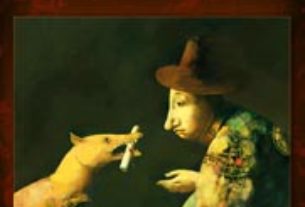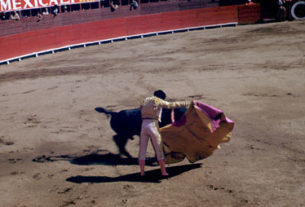Mexican History
“Imagination is more important than knowledge” (Albert Einstein)
The idea of multiple universes or parallel worlds connected by “worm-holes” has long been a feature of modern science fiction and fantasy. However, the idea of consecutive worlds or universes preceding our present world goes back much further. Now the concept of multiverses has been taken up by such eminent scientists as the Royal Astronomer himself, Sir Martin Rees, and his colleague the much acclaimed Stephen Hawkings of Black Hole fame. Have we really made that much intellectual progress in the relatively short time the human race has inhabited the present world? Or did some of our remote predecessors get there first? Let’s take a look.
This column started out as “Perspectives on Mexico.” However, in order to put the intellectual and spiritual achievements of the Aztecs, the Maya, and other advanced civilizations of the Americas into some kind of world perspective, it is perhaps useful to compare and contrast similar developments in other parts of the world at different periods in history. If we wish to have some idea where we are going in the future, or even where we are in the present, we should perhaps know where we have been in the past.
We shall begin with ancient Greece, the intellectual and spiritual source of much of western civilization. It is here that the spirit of scientific enquiry first came into prominence. However, we are here concerned mainly with the early concept of alternate or successive worlds. In a long didactic poem entitled Works and Days, the early epic poet Hesiod admonished his wayward brother Perses with an account of the Five Ages of the human race. The First Golden Race of mortals lived free from toil and grief. They died in their sleep and became benign spirits who created the Second Race. The Second or Silver Race remained children for a hundred years then grew up quickly and lived only a short time. They refused to honour the gods, so Zeus did away with them. The Third or Brazen Race was terrible and strong. They loved to fight with their bronze armour and weapons and so they destroyed each other in warfare. The Age preceding the present Age was that of the Demi-Gods or Age of Heroes when men fought for honour. Some perished but others were sent by Zeus to the islands of the Blessed, where they live eternally. Finally, the Fifth Race, the Iron Race of the present world, as Hesiod points out, is a time of strife and envy. In the Greek concept of the Ages or Worlds, the human race has degenerated from its early promise to its lowest level on the cultural evolutionary scale.
The Romans did not have such an elaborate concept of the Ages as the Greeks, but they did have the De Rerum Natura (On the Nature of Things) of Lucretius. In this long Latin didactic poem, the epic poet Lucretius sought to free humans from the fear of death by explaining the true nature of things. Beginning with the atomic theory of the philosopher Epicurus – that everything is composed of particles – he accounted for motion in the universe by introducing the inexplicably arbitrary swerve of the atoms. The gods, meanwhile, were relegated to the intermundia, the space between earth’s atmosphere and the universe beyond, where they could go about their divine business without interfering with the natural course of things. I doubt that Stephen Hawkings ever read the De Rerum Natura (at least not in Latin). But he seems to have had a similar idea when he suggested that, while a Creator God may have got things started, after the Big Bang, the laws of physics run their natural course without divine interference.
The Vikings too had a dramatic concept of the death and rebirth of the universe. The Norse Eddas, a collection of heroic and mythological poems in Old Norse, tell of the Ragnarök, the Twilight of the Gods, made famous by Wagner’s operatic Ring Cycle. The main theme is the Doom of the Divine Powers, the return of some of the gods to a new heaven, and the appearance of a new earth. In the final struggle of Odin and the gods against their enemies, Fenrir the Wolf and the World Serpent, heaven and Earth are split apart as gods and demons do battle. At first, the gods appear to be defeated. But the northern goddesses are not annihilated and there is no indication that the removal of the principal god Odin is permanent. The Vikings or their ancestors contemplated the end of their Age or universe and the start of a new one. However, the message appears to be that there is hope of a New Age even in the fatalistic world outlook of the Norse Vikings. Was this a kind of Norse version of the Big Bang theory? Just as the mythological Norse Age ended in conflagration, so some of our scientists predict that our present universe will end billions of years from now, if we happen to be living in a contracting universe.
Let us turn now to Mesoamerica and the concept of the Ages held by the Aztecs and the Maya. In recent articles, we looked at the Aztec account of the Five Suns as recorded on the Aztec Calendar or Sun Stone and in the Anales de Cuauhtitlan. Of all the ancient concepts of the Ages or Worlds, the Aztec is perhaps the most elaborate involving other major concepts, such as colour, direction, symbols of the time periods, and presiding deities. The Four Ages preceding the Fifth Age or present sun represent successive – if unsuccessful – attempts to establish the world as we know it. The cosmology of the Aztecs not only postulated the existence of successive creations and destructions of independent worlds or universes. It also provided plausible explanations (for the Aztecs at least) of natural disasters as the result of human error or folly or actions of the gods. For example, fossil bones found by the Indians were the remains of giants, who lived during the First Sun.
The order of the Suns was sometimes inconsistent in different sources. This is hardly surprising in view of the destruction wrought by the Spanish Conquest in which so many pre-Hispanic records were lost. Another variation of the Ages is that of the Texcocan historian Ixtlilxochitl in his Obras Historicas. In this version, the First Age was the Sun of Water, the Age of Creation, when earth was destroyed by flood. The Second Age, the Sun of Earth, saw the destruction of the world by earthquakes. Ixtlilxochitl places the giants in this Age. In the Third Age – the Sun of Wind – much of world was destroyed, although some escaped and found monkeys, which they said the wind must have brought from somewhere. For this reason, some say that men were turned into monkeys, a reverse slant on Darwin’s Theory of Evolution. The Fourth and final Age, Sun of Fire, is to be destroyed by fire. Ixtlilxochitl sometimes names three, sometimes four successive Ages, but not in the same order as the Aztec version on the Sun Stone or in the Anales.
The Maya concept of the Ages or Creations of the world is contained in the Quiche Maya Popol Vuh. In this version, the First Creation is the Cosmic Cycle – the Age of Gods – when the Eternal order was established, the Maya version of the Big Bang Theory of western cosmology. The Second Creation, the Age of the Pre-Human ancestors, foreshadowed the Age of Heroes. The Third Creation was the time of the Divine Twins, Hun Ah Pu and Ix Balanque, the heroes who won the ball game against the Lords of the Underworld and thus conquered death. The Fourth Creation appears to be the final Age in which the Quiche lived at the time of the Spanish Conquest in the 16th century. While the Fifth Age is not specifically mentioned, it is hinted at in the final words of the Popol Vuh to the effect that everything is finished with Quiche ,which is now called Santa Cruz (Holy Cross). This appears to refer to the New Age under Christianity, the Fifth Age, a new cycle in a never-ending sequence of time cycles.
The famous Aztec Calendar or Sun Stone does not seem quite so strange or barbaric as it must have seemed to the early Spanish Conquistadores and missionaries when seen in a wider world perspective. At different times and in different places, people have – with, of course, local variations – developed somewhat similar concepts of the creation and possible destruction of the universe. While the ancients did not have the technological know-how or the instruments to verify their cosmological speculations, their descriptions foreshadow the scientific discoveries of the present day. The ancient Greeks, Romans, Norse Vikings, Aztecs, and the Maya all displayed that depth of imaginative thinking that Albert Einstein described as more important than knowledge, because it is the foundation upon which knowledge is based.
In the next article, we shall look at some modern cosmological theories of alternate worlds or multiple universes in the light of this historical background.
- To Part Two



